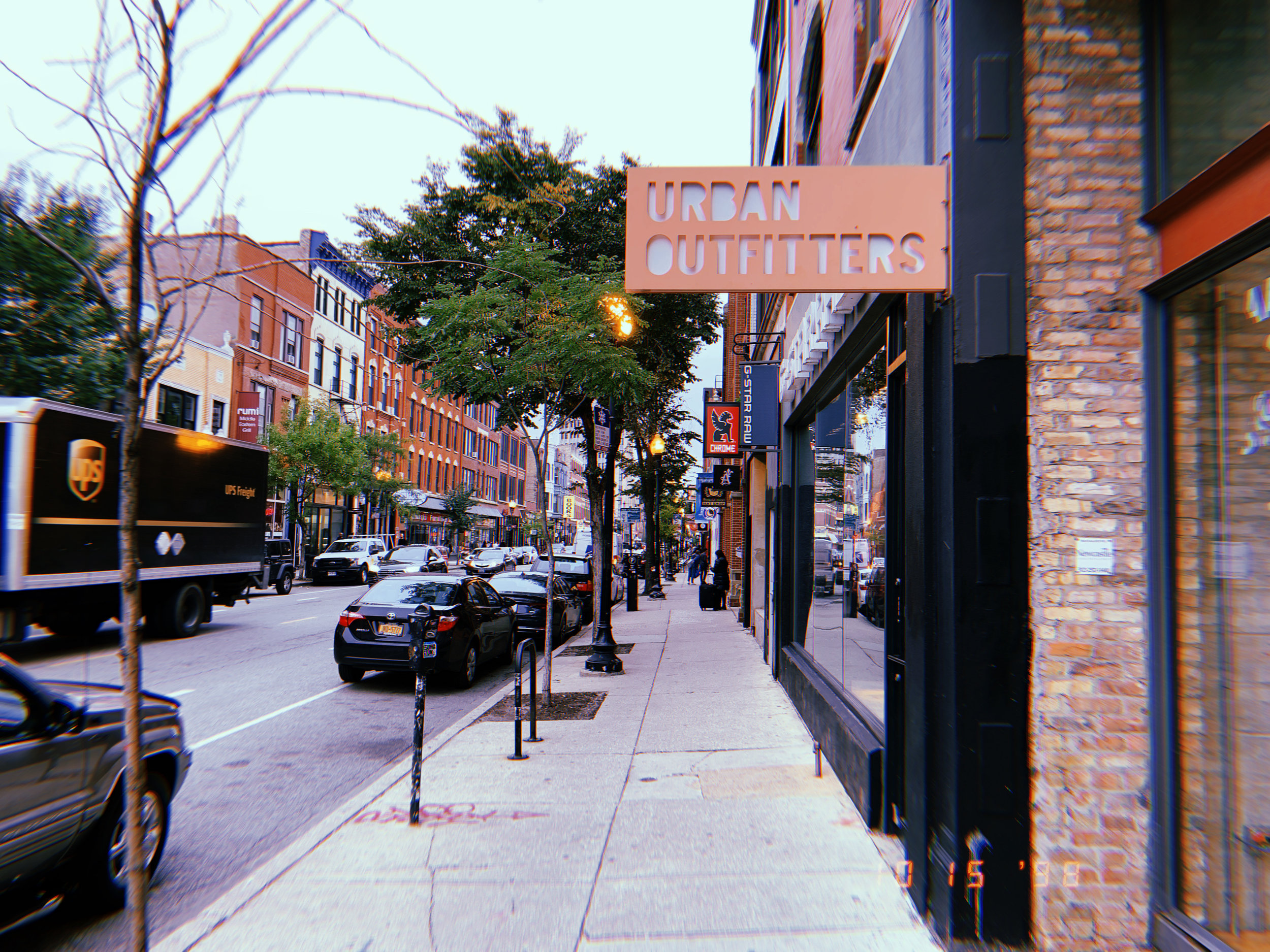Chi Streetwear
Graphic by Izzy Chun. Image via JK Attire
Danté Gilmer says that the utilization of streetwear styles in luxury fashion has had a negative influence, as he says the current state of fashion is “trash,” while Ashlee Winters believes that the merging of these two worlds has had a positive influence.
“I think it’s [fashion] changing for the best,” said Winters, 27-year-old from Houston. “Five to 10 years ago, they’ll try to talk about you, but now it’s the high fashion meeting with the ‘thugs,’ or people from different cultures coming together as one. I think it’s evolving, and ever going to evolve.”
Gilmer, 22, of Los Angeles, said: “It was rare to see people from ‘urban spaces,’ specifically black men rapping about the hood, to say they wear Gucci. When that started, high fashion… started taking from streetwear…With that happening you have people who are trying to keep it rooted to at least some type of community. I think that’s what is totally just gone in the higher fashion sense.”
The differences in viewpoints between Gilmer and Winters are reflected in Hypebeast’s “Streetwear Impact Report,” which asked consumers “why they like streetwear” 69.5 percent said “cool,” 45.8 percent said “exclusivity” and 26.7 said “status symbol” while only 24 percent said “community.”
Image via André DeGrenier
David Rasool Robinson, a manager at streetwear boutique Saint Alfred, believes the merging of streetwear and luxury fashion has had both positive and negative influences.
“’Streetwear’ and that spirit, that community, that was built on expression,” Robinson said. “In some realms, it was kind of counterculture, counter to what the status quo was. A lot of the big brands or entities come into it, many I feel see it as a money grab.
“Obviously, you have to have art and commerce. But, I feel with that you can reach that saturation point because a lot of these entities are trying to take without giving back. But the good side is that it provides a wider scope to what has been a niche thing over the past years.”
Eshaan Karia, 17-year-old Chino Hills-based reseller, started reselling clothes two years ago by flipping clothes from Goodwill. For Karia, community is important as he says streetwear is “almost a family.”
With streetwear becoming more mainstream, similarly to Robinson, Karia said that often other resellers become “selfish.” In return that “negatively impacts business.”
According to the 2018 Fall-Winter Bain & Company “Luxury Goods Worldwide Market Summary” personal goods outperformed every other segment of the luxury market with Generations Y and Z representing 47 percent of consumers of personal luxury goods.
“We are in the middle of witnessing a generational overhaul,” said Colbey Emmerson Reid, Ph.D., chair of the Department of Fashion Studies at Columbia College Chicago. “Millennial and rising Generation Z consumers are wanting new kinds of things from luxury brands and to solicit that demographic, those brands are having to shift and figure out how to maintain its core luxury brand status and identity while also meeting the needs and expectations of younger consumer groups.”
In the fall of 2017 Louis Vuitton and streetwear brand Supreme teamed up for a direct collaboration.
“Before, Louis Vuitton was for people who were older, people who could afford their products,” said Qingmiao Wang, 27-year-old from Los Angeles. “But now they worked with Supreme, so their target customer is younger.”
Image via André DeGrenier
Along with the negative effect luxury fashion has had on the streetwear community, Gilmer said that this has caused streetwear to take multiple forms based on the consumer. Gilmer says that those from “urban spaces” will be stereotyped while not from “urban spaces” are able to cross lines between street and luxury fashion.
“If you see someone wearing dreads and a durag, no matter how expensive their clothing is, their clothing will be used to rationalize a negative assumption about this person,” Gilmer said.
“On the flip side, if you don’t have those very visible othering identities, then you’re not going to have that negative assumption of having streetwear and instead of being looked down upon, you just get clout. It bugs me seeing these lines crossed because people…ignore the connections.”
Rikki Byrd, Ph.D. student at Northwestern University, says that social media has caused luxury brands to be “held accountable” when they are guilty of appropriating, as she references the history between Dapper Dan and Gucci.
Yusra Shah, 21-year-old from Chicago, says that there is a difference between cultural appropriation and appreciation as some consumers purchase clothing for the “hype” versus trying to “understand where things are coming from [culturally].”
Image via André DeGrenier
Robinson says that he has seen instances of genuine intention, but also instances of cultural appropriation.
“I feel like people know if it’s appreciation or appropriation by the way they approach it,” Robinson said. “I feel like if there was more dialogue versus that tension, then you would have less of a line drawn in the sand.”
Robinson says that through dialogue, driven by the same younger generations that are driving the luxury market, tension will begin to erode.
Members of the younger generations such as Sarah Angel express a similar viewpoint.
“Community allows fashion to branch off in different directions,” said Sarah Angel, Northwestern University sophomore original from Scarsdale, New York. “The breaking down of these barriers will help, giving them [OG Streetwear Community] a new voice that they haven’t been allotted.”




